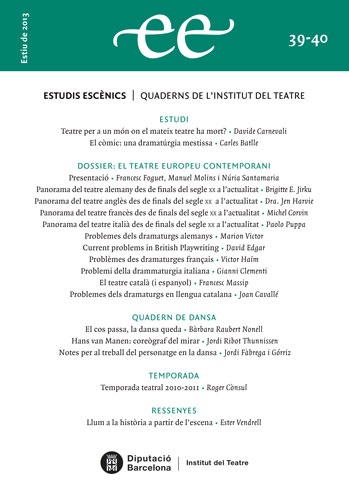El còmic: una dramatúrgia mestissa
Resum
The aim of this article is firstly to contribute certain aspects to the debate on the concept of play-writing and, moreover, to provide arguments backing the consideration of the art of the comic as a playwriting discipline.
The article first analyses the controversial definition of the term “play-writing” and puts forward a comprehensive solution. It does not matter whether a text was not initially envisioned for the stage, it is not important whether it is lyrical, narrative or in essay form and it is not significant that a text has never been performed, albeit having been conceived for stage. If we read it and project its implicit theatricality in our minds, we will produce a virtual staging of the text. We will activate a representation of it. Reading/writing to produce a play always implies attending an imaginary performance. A “good reader”, Sanchis states, is he who is also a “virtual director”. Accordingly, reading/writing theatre is a way of directing theatre. In other words, play-writing entails the composition of a work and, as a result, it unavoidably becomes a “passage” from text to stage. A “passage” that may indeed be real or virtual, but which nonetheless cannot be disassociated from the act of writing.
Then the article defines the basic characteristics of the comic, its complexity and its specificity. The comic constitutes play-writing. Its specificity results in a combination of a representation-based origin, a composition and models of meaning shrouded in ethnic fusion. We refer to a language of convergence, one that is plural (the language of languages), to a unique expressive identity which does not have to do with a dichotomy of traits but rather with its capacity to coincide with other languages of vision, word or temporality.














